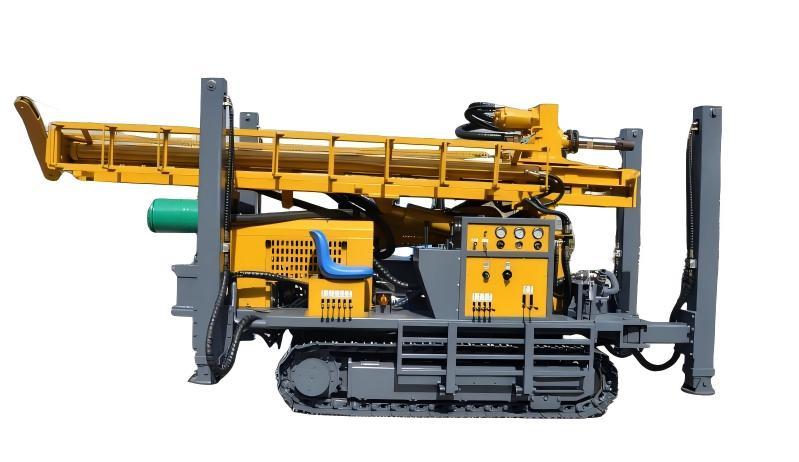How to Troubleshoot Crawler Drilling Rig Performance Issues: A Comprehensive Guide
Nov 24,2025

How to Troubleshoot Crawler Drilling Rig Performance Issues
Table of Contents
- 1. Introduction to Crawler Drilling Rigs
- 2. Common Performance Issues in Crawler Drilling Rigs
- 3. Diagnosing Performance Problems
- 4. Troubleshooting Engine-Related Problems
- 5. Hydraulic System Troubleshooting
- 6. Adjusting Drilling Parameters for Optimal Performance
- 7. Regular Maintenance Tips to Prevent Issues
- 8. Conclusion
- 9. Frequently Asked Questions
1. Introduction to Crawler Drilling Rigs
Crawler drilling rigs are essential tools in the engineering and construction sectors, particularly for drilling in challenging terrains. These machines offer mobility, stability, and the ability to perform precise drilling tasks. However, like all machinery, they can experience performance issues that can hinder productivity. Understanding how to troubleshoot these problems can lead to improved operational efficiency and reduced downtime.
2. Common Performance Issues in Crawler Drilling Rigs
Performance issues may arise from a variety of sources, including mechanical failures, electrical malfunctions, and environmental factors. Here are some **common performance issues** that operators may encounter:
2.1 Insufficient Drilling Speed
A decline in drilling speed can significantly affect project timelines. This issue may result from improper settings or mechanical wear.
2.2 Vibrations and Excessive Noise
Unusual vibrations and noise may indicate underlying mechanical problems. These symptoms should not be ignored, as they could lead to more severe damage.
2.3 Inconsistent Drilling Depth
Inconsistent depth can result from various factors, including equipment misalignment and operator error. This can negatively impact the quality of the project.
2.4 Hydraulic System Failures
The hydraulic system is crucial for the operation of crawler drilling rigs. Failures in this system can lead to loss of power and reduced efficiency.
3. Diagnosing Performance Problems
Before implementing any solutions, it is vital to correctly diagnose the performance issues. Here’s how to approach diagnosis systematically:
3.1 Conduct Visual Inspections
Start with a thorough visual inspection to identify any obvious problems. Look for leaks, damaged components, or loose connections.
3.2 Utilize Diagnostic Tools
Employ diagnostic tools to gather data on performance metrics. These tools can help pinpoint issues with the engine, hydraulic system, and other components.
3.3 Review Operational History
Analyze the operational history of the rig. This can reveal patterns that point to specific issues, such as recurring hydraulic failures or engine troubles.
4. Troubleshooting Engine-Related Problems
The engine is the heart of any drilling rig. Troubleshooting engine-related issues involves several steps:
4.1 Checking Fuel Supply
Ensure that the fuel supply is adequate and that there are no blockages. Contaminated fuel can cause engine malfunctions.
4.2 Inspecting Air Filters
Clogged air filters can restrict airflow, affecting engine performance. Regularly check and replace air filters as part of maintenance.
4.3 Monitoring Engine Temperature
Overheating can lead to severe engine damage. Monitor temperature readings and check for coolant leaks or low fluid levels.
5. Hydraulic System Troubleshooting
Given the critical role of the hydraulic system, it is essential to troubleshoot any issues thoroughly:
5.1 Inspecting Hydraulic Fluid Levels
Low hydraulic fluid levels can lead to inadequate pressure and power loss. Always check fluid levels before operation.
5.2 Identifying Hydraulic Leaks
Look for signs of hydraulic fluid leaks around hoses, fittings, and cylinders. Repair any leaks promptly to restore system efficiency.
5.3 Testing Hydraulic Pressure
Use a pressure gauge to test hydraulic pressure. If the pressure is below specifications, investigate potential causes such as worn hydraulic pumps or valves.
6. Adjusting Drilling Parameters for Optimal Performance
Sometimes, issues may arise from incorrect drilling parameters. Adjusting these can lead to improved performance:
6.1 Optimizing Drill Bit Selection
Choosing the right drill bit for the material being drilled is essential. A mismatched bit can slow down operations and lead to increased wear.
6.2 Adjusting Weight on Bit (WOB)
Proper weight on the bit can enhance drilling efficiency. Make adjustments based on the material and drilling conditions for optimal results.
6.3 Modifying Rotational Speed
Incorrect rotational speeds can affect drilling performance. Experiment with different speeds to find the optimal setting for specific conditions.
7. Regular Maintenance Tips to Prevent Issues
Preventive maintenance is crucial for ensuring the longevity and reliability of crawler drilling rigs. Here are some maintenance tips:
7.1 Schedule Regular Inspections
Conduct regular inspections to catch potential issues early. This includes checking all systems—mechanical, electrical, and hydraulic.
7.2 Maintain Cleanliness
Keep the rig clean to prevent dirt and debris from interfering with its operations. Regular cleaning can help maintain optimal performance.
7.3 Follow Manufacturer Guidelines
Always adhere to the manufacturer’s maintenance schedule and recommendations. This will ensure that the rig operates efficiently and safely.
8. Conclusion
Troubleshooting crawler drilling rig performance issues requires a systematic approach that encompasses thorough diagnostics, targeted repairs, and proactive maintenance. By understanding common problems and their solutions, operators can improve rig efficiency, reduce downtime, and enhance overall project success. Regular maintenance and vigilance are essential to prevent issues before they arise, ensuring that your drilling operations are always at their best.
9. Frequently Asked Questions
1. What are the most common issues encountered with crawler drilling rigs?
Common issues include insufficient drilling speed, excessive vibrations, inconsistent drilling depth, and hydraulic system failures.
2. How often should I perform maintenance on my crawler drilling rig?
Regular inspections should be conducted before and after each use, with comprehensive maintenance scheduled according to the manufacturer’s guidelines, typically every 250 hours of operation.
3. What tools are best for diagnosing crawler drilling rig problems?
Diagnostic tools such as pressure gauges, engine analyzers, and hydraulic flow meters are effective for identifying performance issues.
4. How can I improve drilling speed?
Drilling speed can be improved by optimizing drill bit selection, adjusting weight on bit, and modifying the rotational speed based on the material being drilled.
5. What should I do if I notice hydraulic fluid leaks?
If you notice hydraulic fluid leaks, immediately identify the source of the leak, repair it promptly, and check the hydraulic fluid levels to ensure system functionality.
By following these guidelines and recommendations, you can effectively troubleshoot and optimize the performance of your crawler drilling rig, ultimately leading to more successful and efficient drilling operations.
PREVIOUS:








